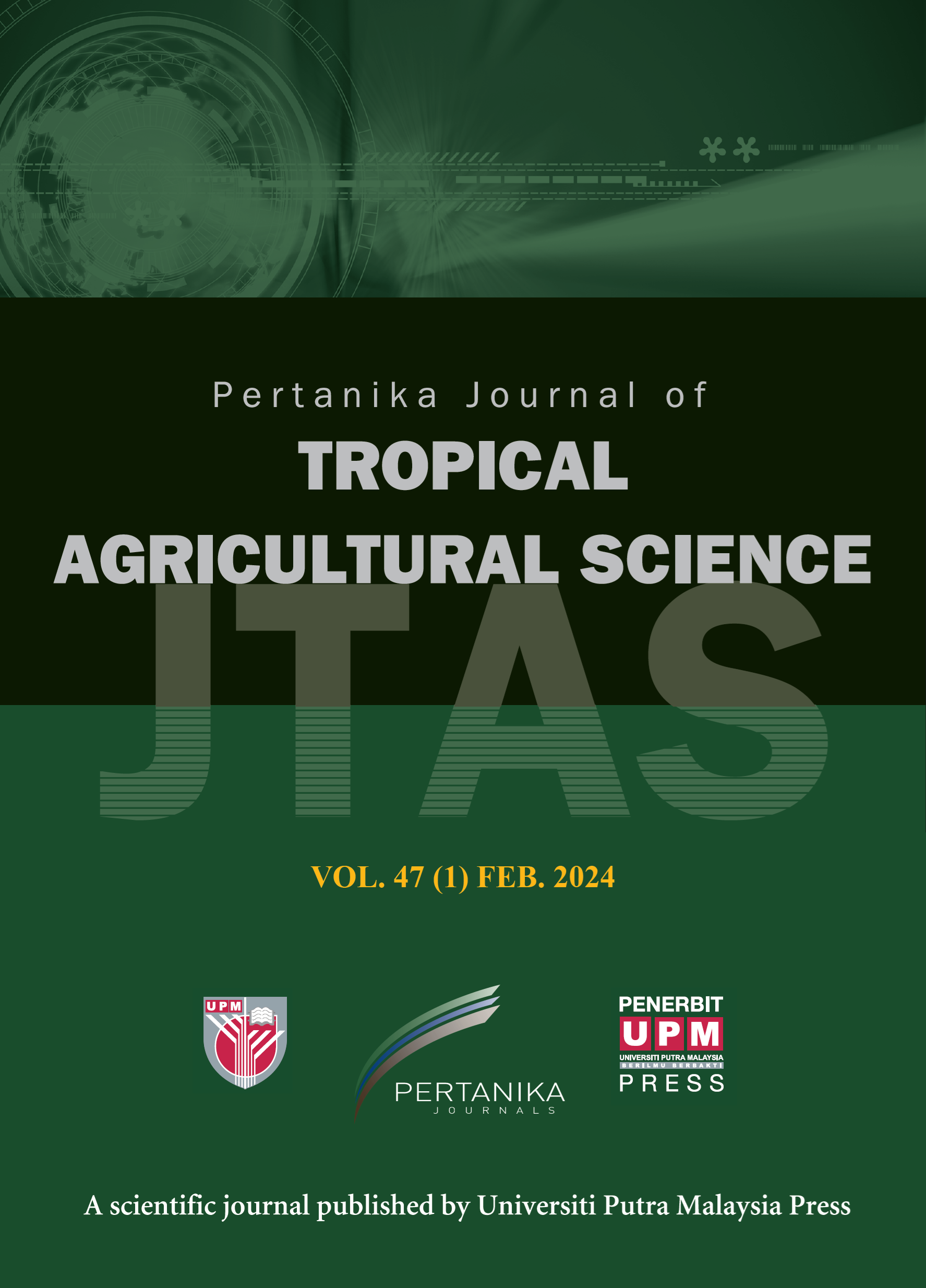PERTANIKA JOURNAL OF TROPICAL AGRICULTURAL SCIENCE
e-ISSN 2231-8542
ISSN 1511-3701
A Review of Pregnancy Rates in Beef Cattle via Timed Artificial Insemination Utilizing CIDR-based 5 and 7-Day CO-synch Protocols
Jigdrel Dorji, Mark Wen Han Hiew and Nurhusien Yimer
Pertanika Journal of Tropical Agricultural Science, Volume 48, Issue 3, May 2025
DOI: https://doi.org/10.47836/pjtas.48.3.08
Keywords: Beef cattle, CIDR, CO-synch, pregnancy rates, timed artificial insemination
Published on: 2025-05-16
Although timed artificial insemination programs (TAI) are widely implemented, the effectiveness of field CO-Synch programs is less known. A clear understanding of overall pregnancy rates (PRs) from controlled internal drug release (CIDR)-based TAI programs like 7-day CO-Synch (7DCOS) or effectiveness of various prostaglandin delivery in 5-day CO-Synch (5DCOS) is not available. This paper aimed to review pregnancy rates in 7DCOS and 5DCOS (with different methods of prostaglandin delivery). An analysis of 74 studies retrieved from Google Scholar, PubMed, and ScienceDirect was done. The TAI-PRs were expressed as Weighted TAI-PR (WTAI-PR) to account for different trial sizes across various studies. The WTAI-PR was 54.91% in cows and 53.50% in heifers under 7DCOS, and 51.75%, 50.38%, and 57.98% for cows and 52.84%, 51.90%, and 58.42% for heifers treated with 5DCOS+CIDR® with a single (25 mg), double (50 mg)/two simultaneous doses (25 mg each) or two separate doses (25 mg, 2-24 hours apart) of prostaglandin (PGF). Other factors like cyclicity at treatment initiation, breeding season, estrus expression before AI, and body condition score affected the TAI-PRs. Although two doses of PGF were effective, the cost was higher due to the extra labor for handling and purchase of hormones. Both 5DCOS and 7DCOS showed satisfactory pregnancy rates, but progesterone device discomfort due to two additional days (7DCOS) are a welfare concern. There is a lack of studies evaluating these programs in tropical climates. Future research should focus on the effect of unique environmental conditions in the tropics on the success of these protocols.
ISSN 1511-3701
e-ISSN 2231-8542




